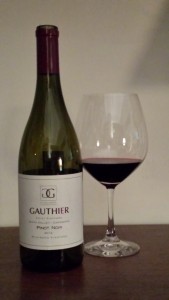It’s not news that 2011 was a terrible year for California wines. Don’t just take our word for it; Wine Spectator said that “the 2011 growing season was simply nasty for many California winegrowers.” It was cold. It rained when it shouldn’t have and didn’t rain when it should have. This should be a warning to those who would like to visit Northern California’s Wine Country over the next year or so.
It’s not that you’ll only be served “lousy” wine. For one thing, it has long been said that there’s bad wine in good years and good wine in bad ones. We’ve tasted some pretty good wine from that troubled vintage. Turnbull’s Fortuna Vineyard wines and Caymus Special Selection are good examples. When we tasted the Caymus, it had just been released. It was pretty good and generally this wine improves with aging.
Some wineries decided not to make their top wines that year, so there is no 2011 Etude Heirloom Pinot Noir or Conn Creek Anthology available for tasting. Other vineyards tried to tough it out and, in our opinion, made wines that don’t live up to their heritages, although they still cost the same as in better years.
Visitors should approach each winery with informed caution. By all means, taste the 2011s if that’s what’s on offer. If you like them, so much the better. If you don’t, that’s a part of the educational experience as well. It’s as valuable to know what you don’t like as what you do like.
If you’re not happy with what you’re tasting, or you’re not sure, say so and ask if they have an earlier vintage to try, for comparison’s sake. Most wineries have older bottles and would rather open one than let you leave dissatisfied. We call our blog Power Tasting because we believe the visitor has a right to question and compare. In most tasting rooms, you pay a substantial amount to taste the better wines. You ought to get your money’s worth.
When you do compare two vintages of the same wine, ask for two glasses and taste them side by side. While it’s true that extra time in the bottle will improve many wines, you’ll still get a good idea how two different vintages are alike and how they vary. Since they’re from the same vineyard and crafted by the same winemaker, the difference has to be in the conditions that come from the weather. The knowledge that comes from learning to distinguish these differences in your own mouth is one of the things that makes wine tasting so exciting.
